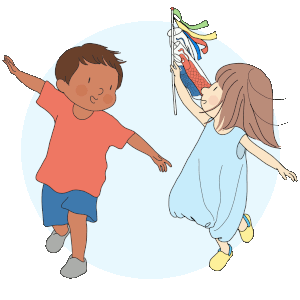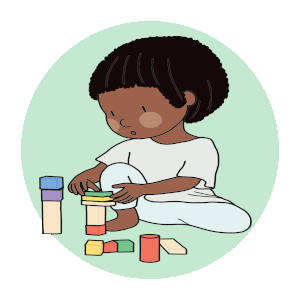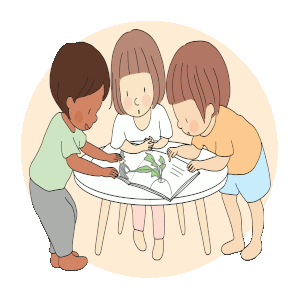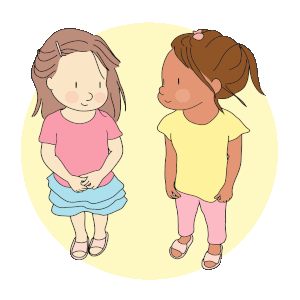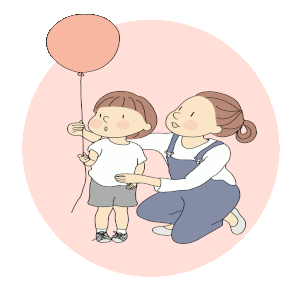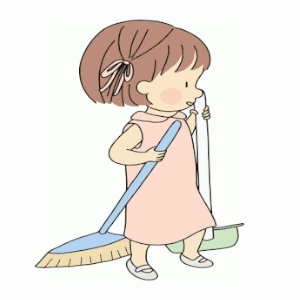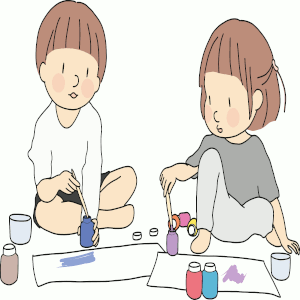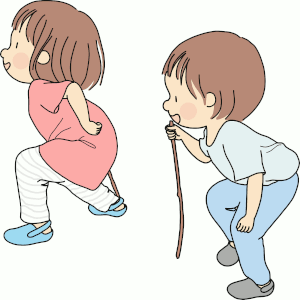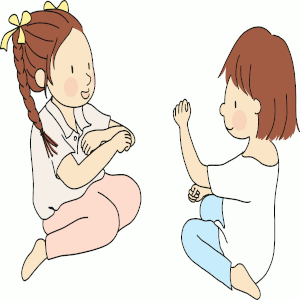The Autism Play Guide
Play is a natural, fun driver of child development. It nurtures communication, encourages social and emotional interplay, teaches problem-solving, and boosts physical motor skills.
Children with autism often approach play differently. Understanding how and why can boost your confidence as a parent.
In this guide, you’ll find easy inspiration and practical ideas to help you nurture your child’s play skills.
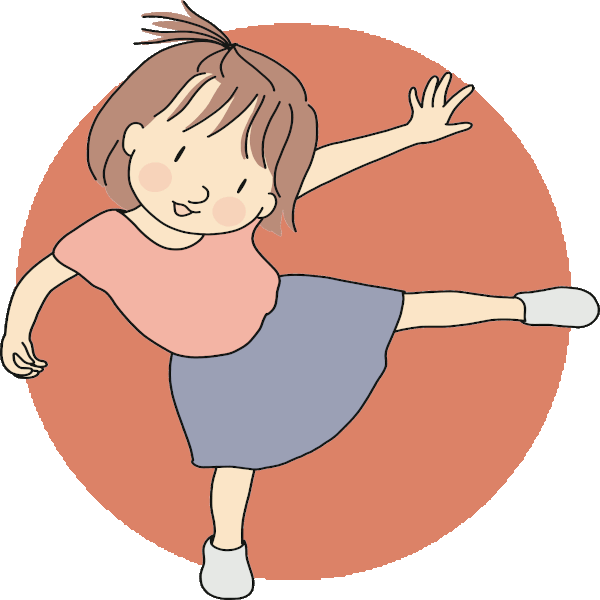
Contents
How Play Can Be Affected by Autism
Some play skills are often delayed in children with Autism Spectrum Disorder (ASD). There are, however, many things parents or caregivers can do to help a child to grow and develop their play.
Understanding where they struggle and how ASD might be affecting their play, can make it easier to support them.
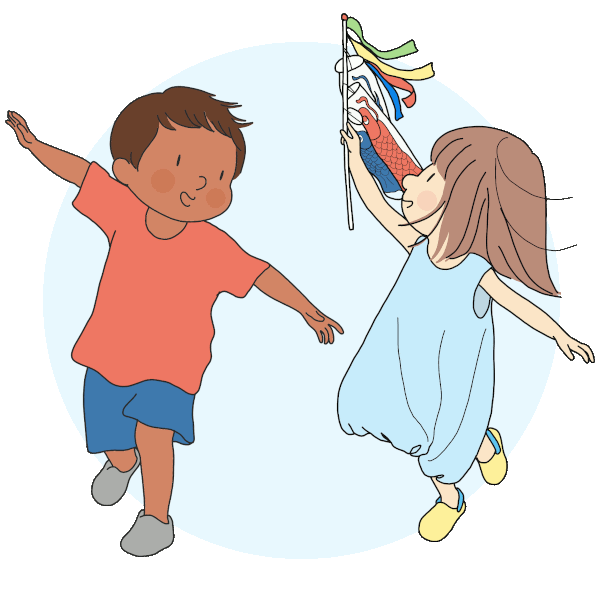
Play can take on a different context for children with ASD; it may at times be narrow in scope, repetitive, or limited in nature. They may choose to play with only a few toys rather than many. They might also focus more on mechanics than play. It is common for those with ASD to be more interested in the texture of a toy’s surface or the opening and closing door of a dollhouse, than the toy’s normal play value.
ASD impacts the development of social and communication skills. This in turn can affect various social play skills, such as:
- Repeating what they see peers do
- Exploring their surroundings
- Sharing toys and adult interactions
- Experiencing empathy
- Responding to those speaking to them
- Being patient and taking turns
Regardless of a child’s ability to play interactively, they can benefit from guided play. Parents can fill a key role in teaching their child how to play with others.
Just keep in mind that all children will react differently to activities and some will need time to get used to new play activities, so don’t be disheartened if at first your child doesn’t want to engage or gets upset.
Six Important Play Skills
Children engage in six primary play types, each of which relates to unique skill development outcomes.
For children with ASD, a parent’s guidance and prompting can help to develop certain play skills. Let’s take a look at how parents can help teach these skills.
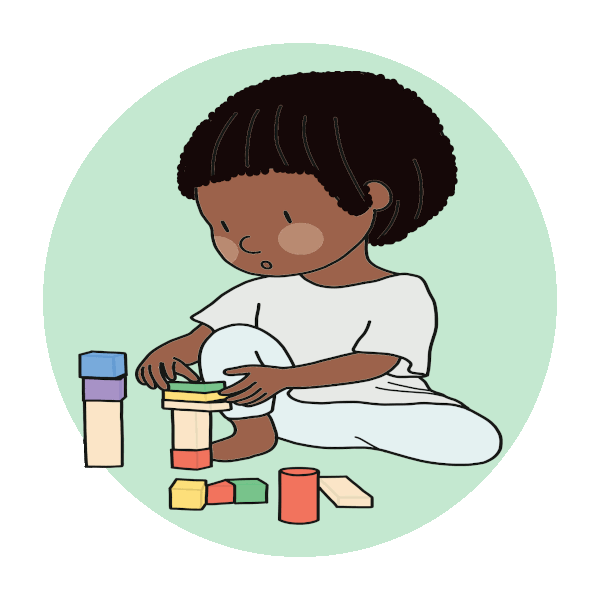
LEARNING CAUSE AND EFFECT
Games or toys that teach cause and effect are those that require a playing child to trigger a mechanism of action. Learning these principles helps develop logical and critical thinking. This play demonstrates that the child’s actions cause predictable results. This realization lets children feel more control of not only their play but their world at large.
These activities help a child to learn to share and take turns, use hand-eye coordination, and watch and repeat a sequence of actions. They’re ideal choices for incorporating into social and sensory play experiences.
Play and game ideas:
#1
Play the Pop-Up Game
A toy, like a jack-in-the-box, is an excellent pick to explore cause and effect. Begin by sitting facing your child, with the toy facing away from you and toward them. Slowly wind the crank, demonstrating how the action works. When the pop-up happens, show your surprise and interest, then repeat the process. Allow your child to repeat your action. They can soon make the connection between mimicking your action and achieving the same results.
- Appropriate for age: 3+
- Related social play skills: Side-by-side
- Notes and other skill boosts: Teaches how to control objects, plus cause and effect.
#2
Whistle While You Learn
A simple whistle is perfect for teaching cause and effect. With just a breath, the child can create a sound. Demonstrate the whistle to your child. Show them how to take in a deep breath. Then, exaggerate blowing a deep breath into the whistle. When they’ve mastered basic use, show them how to create rhythm and play a “tune” by blowing in shorter breaths.
- Appropriate for age: 3+
- Related social play skills: Side-by-side
- Notes and other skill boosts: Offers helpful auditory feedback
Exploring Toys and Surroundings
Exploration play helps a child learn about their environment using their five senses: taste, touch, smell, hearing, and vision. When children with ASD engage in exploration play, they may feel things with their hands, examine them visually, or put them in their mouth.
With these senses, they see the differences in the shapes, sizes, textures, and colors of toys and other objects. Exploration through play uses toys to trigger and remember experiences. Simple exploration of the environment can also facilitate this learning even without using toys.
Play and game ideas:
#1
Keeping Busy with Busy Boards
A toy that winds and pops up is an excellent pick for exploring cause and effect. Begin by sitting facing your child, with the toy facing away from you and toward them. Slowly wind the crank, demonstrating how the action works. When the pop-up happens, show your surprise and interest, and repeat the process. Then, allow your child to repeat your action, making the toy pop up on their own.
- Appropriate for age: 3+
- Related social play skills: Side-by-side
- Notes and other skill boosts: Teaches critical thinking
#2
Close-up Exploration with a Magnifying Glass
A kid-safe magnifying glass allows them to safely take a closer look at lots of objects, giving them the ultimate eagle eye during exploration play. Work together to show them how to use the magnifying glass by moving it closer and further away from words or an image on a page. Then, teach them to hold the tool carefully and properly, and let them decide what they’d like to look at for a bit of self-led exploration.
- Appropriate for age: 5+
- Related social play skills: Low-contact, high-contact
- Notes and other skill boosts: Great addition to outdoor play
Traditional Hands-on Play
It can be challenging for a child with ASD to use toys in the way another child would. A few tips to ease the transition: offer plenty of positive feedback, focus on their favorite toys, and sit across from them so they can watch you play. Only continue the activity as long as your child is engaged with a positive mood.
The point of this play is to teach the child shapes, sizes, textures, and colors. This play style can be encouraged through toys intended to trigger sensory experiences, but can also be facilitated by simple environmental exploration.
Play and game ideas:
#1
Getting It All Sorted
Sorting by shape, size, or color is not only fun play but teaches at the same time. Focus on the child’s stronger abilities and build toward building new abilities in the weaker categories. Stay focused on one shape, ,color, or size at a time.
- Appropriate for age: 3+
- Related social play skills: Side-by-side, low-contact, high-contact
- Notes and other skill boosts: Vocabulary learning opportunity
#2
Building on Exploration Play
If your child tends to focus on exploring their toys rather than playing with them in a traditional manner, join in. Then, move toward using the toy in a traditional manner, such as making a toy car drive or tapping the keys of a toy piano. Building to the activity rather than switching to it is sometimes more effective at encouraging traditional play.
- Appropriate for age: 3+
- Related social play skills: Side-by-side, low-contact
- Notes and other skill boosts: Good for teaching watching and repeating
Imaginative Play
Imaginative play includes the use of fantasy and pretend to tell stories and act out character roles. This play skill is important for social development, language and use interpersonal communication.
Imaginative play skills may be an area where the child with ASD has the most difficulty. Pretending is a skill that many people with ASD struggle with throughout their lives. Don’t ask too much and praise any progress. This skill can take a long time to learn.
It can work well to encourage pretending by breaking play into a series of very simple actions and starting with miming very basic activities like hair-brushing or putting a piece of trash in the wastebasket.
This play style can provide a teaching tool for understanding empathy, interpreting non-verbal communications, talking about vocal inflections, and learning how other people might express emotions differently.
Play and game ideas:
#1
Tell a Story With Toys
Choose one toy that is a favorite. This may be a doll or action figure, but it needn’t be figurative. It could just as easily be a train engine or a block. Ask what the toy is doing. Is it sad or happy?
Repeating this play every day may help the child develop more accurate identification of human feelings she may have herself.
- Appropriate for age: 5+
- Related social play skills: Low-contact, high-contact
- Notes and other skill boosts: Good way to learn/discuss social rules/situations
#2
Skill-Building Dress Up
Dressing up can be a fun element of fantasy play, and spending time focusing on fixtures like zippers, buttons, and snaps encourages the development of hand-eye coordination and builds life skills. Gather a trunk or box of over-sized garments that use fasteners and can be worn over their clothes. Use them to practice getting dressed and securing clothes that use fasteners.
- Appropriate for age: 5+
- Related social play skills: Side-by-side, high-contact, low-contact
- Notes and other skill boosts: Choose pieces that use sensory-friendly soft fabrics
Physically Active Play
Physically active play is an important part of a healthy childhood. It also facilitates gross motor skill development, proprioception and coordination, areas in which children with ASD sometimes fall behind. Be sensitive to your child’s abilities and choose activities that will help them advance.
Play and game ideas:
#1
Stepping Stones
Stepping stone toys that encourage children to use balance also offer a boost to gross motor skills. Safe, non-slip rubber or silicone toys make the experience a bit more secure.
Begin by balancing on stones with eyes open, and graduate to moving from stone to stone. Eventually, encourage your child to try balancing with their eyes closed to see how well their skills are developing.
- Appropriate for age: 5+
- Related social play skills: Side-by-side- low-contact, high-contact
- Notes and other skill boosts: Fun outdoor social play activity
#2
Dance Party
Listening to favorite tunes at a reasonable volume can help kids with ASD to feel calm and might appeal to some youngsters with ASD. Keep in mind, however, that your child may not like a certain kind, volume, rhythm of some music. They may not like music at all or be interested in only one type. Dance movements provide gross motor skill development along with a fun exercise.
There are no real rules here other than having fun, but “themed” dances can be used to teach actions related to brushing teeth, or can be used to practice their reaction to commands like “freeze”.
- Appropriate for age: 2+
- Related social play skills: Side-by-side, low-contact, high-contact
- Notes and other skill boosts: Great quick activity when they have the wiggles
Building as Play
Building is a time-honored play activity. From before the Stone Age, kids have been stacking objects to resemble buildings. These toys encourage the use of hand-eye coordination, logic, critical thinking, and spatial reasoning.
Some kids are better at these skills than others. Demonstrate how to build a structure by putting only one block on top of another. As the child grasps the concept, more blocks and more elaborate designs will keep them interested. It will also develop spatial and physical skills at the same time.
Play and game ideas:
#1
Simple Jigsaw Puzzles
Jigsaw puzzles with large pieces and bold, clear images can be good choices for younger children with ASD. Let your child watch you assemble the puzzle, seeing how the pieces fit together. Together, practice sorting pieces into like colors to make it easier to assemble the full picture. As your child’s skills grow, help a bit less. Gradually, you can work your way up to puzzles with more pieces. More challenging puzzles will have fewer cues to solution. These include fewer large colors and more small ones, different shapes, and more complex graphics.
- Appropriate for age: 2 to 3+
- Related social play skills: High-contact
- Notes and other skill boosts: Encourages critical thinking
#2
Building a Tower
Some children with ASD excel at this activity. Encourage their exploration by providing them with more advanced building sets. Practice placing blocks one at a time — a great opportunity to also work on taking turns — and being careful to keep the structure steady. Make sure to offer lots of praise for their completed work.
- Appropriate for age: 3+
- Related social play skills: Side-by-side, low-contact, high-contact
- Notes and other skill boosts: Building play is also a great way to boost their hand-eye coordination
Outdoor Play
All play styles can be enjoyed a bit more by just being outdoors rather than a stuffy room. Some children with ASD are sensitive to the sights, smells, and sounds in nature. Leaves of grass, flowers, and trees may disturb some kids. It may be useful to place a blanket over the grassy areas to provide a layer of protection.
Play and game ideas:
#1
Conquering Obstacles
Obstacle courses encourage gross motor skill development, balance, and logic, and setting one up is as easy as placing a few simple items on the lawn. Kids can hop over a baton or pool noodle, run a circle around a hedge, and climb onto the sliding board to complete their track. Have them practice again and again, praising them for good effort.
- Appropriate for age: 5+
- Related social play skills: Low-contact, high-contact
- Notes and other skill boosts: Perfect for group play
#2
SPRINKLER FUN
A rotating sprinkler in the yard can offer both outdoor playtime and sensory engagement. Let them run around, splash, and play in a shady area while wearing plenty of sunblock. They’ll be developing gross motor skills, and it’s a fun activity to share with siblings and friends.
- Appropriate for age: 2+
- Related social play skills: Side-by-side, low-contact, high-contact
- Notes and other skill boosts: This can easily lead into sensory mud play, which is perfectly safe and plenty of fun
Sensory & Messy Play
Sensory play occurs when children use their five senses to explore their world, experiencing and becoming comfortable and familiar with new tastes, textures, and sensations. Sensory play can relate to exploratory play, but it places specific focus on sensory stimulation through activities like water play and texture play.
This play style is often a good match for time spent outside, as it allows for play to get a little bit messy or wet without making a big mess in the home. However, some children with ASD are more able to tolerate sensory stimulation than others.
Play and game ideas:
#1
Sensory Play Table
A high-sided play table filled with bins of sensory-friendly items offers children with ASD plenty to explore and experience. Squishy beads, soft, fuzzy pom poms, sand, slime, and other items can all be included in their play table, but parents should always supervise to make sure nothing ends up in their mouths.
- Appropriate for age: 5+
- Related social play skills: Side-by-side, low-contact, high-contact
- Notes and other skill boosts: Portable sensory tables are great for outdoor messy play
#2
Shredded Paper Treasure Hunt
If you find yourself with a lot of old documents to run through the shredder, save the shreds! A clear plastic bin filled with paper shreds and tiny toys can become a sensory excavation mission and treasure hunt, sending them digging with both hands in search of loot. This activity has a little bit of everything — physical activity, critical thinking, and the potential for social play.
- Appropriate for age: 4+
- Related social play skills: Side-by-side, low-contact, high-contact
- Notes and other skill boosts:
Chapter 3:
Understanding & Facilitating Social Play
Though social play can sometimes take on a different appearance in kids with ASD, it’s important to recognize that even side-by-side play is a significant act of social development.
Understanding levels of social play is an important part of recognizing growth and milestones in your child with ASD.
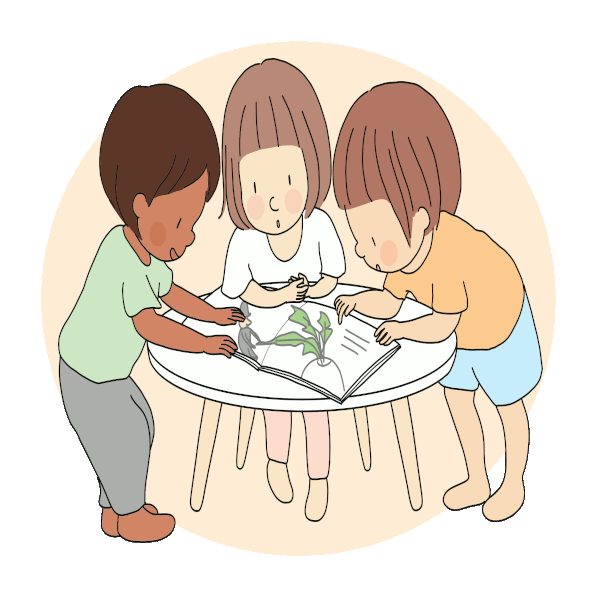
Solo Play
This play style occurs when a child in a group setting chooses to play alone. They do not demonstrate interest in other children or the activities they are participating in. Quick activities and games which have a defined beginning and end point help children with ASD to feel fulfilled in their solo play without allowing solitary activities to dominate their play experience.
Play and game ideas:
#1
Memory Card Game
A flip-card game designed to encourage memory skills and focus is a quick activity to occupy kids with ASD while flying solo during social time. Arrange the cards in a grid, and take turns flipping over two cards to try and make a match. Some games use faces, doubling as a teaching tool for facial recognition.
- Appropriate for age: 4+
- Related play skills: Traditional
- Notes and other skill boosts: While this can easily graduate to side-by-side, low, or high-contact play, it’s a nice quick game for when they need a moment alone.
#2
Sliding Puzzle
Sliding puzzles are a compact alternative to jigsaws, and since the pieces don’t fall out, they’re very portable. Time spent solving a sliding puzzle can be a pleasant reprieve from social stimulation for kids with ASD. Since the ending is clearly defined, it’s easier to segue into a new activity after completion.
- Appropriate for age: 5+
- Related play skills: Traditional
- Notes and other skill boosts: These puzzles can stymie repetitive behavior, as it’s hard to solve them the same way twice
Side by Side Play
Side-by-side play is normal in the social development at the toddler stage. Children play alone but next to each other. There is little or no interaction between them. This stage may last longer for kids with ASD.
During this type of play, children may choose to use the same toys, but will not engage with other children who are playing. They may copy the actions of other children in the group, or may be prompted by a caregiver to play in this way.
Play and game ideas:
#1
Scented clay play
Play dough or modeling clay can easily take on new, pleasant scents with the use of essential oils and basic kitchen ingredients like cinnamon and vanilla.Set up a table with chairs around it for several children. While they play with the clay, they will be sitting side by side. Talk about the clay’s colors and odors. En courage the children to talk about them and show samples to each other. This kind of activity will begin to break down barriers to social interaction. Demonstrate and talk about the colors and smells to encourage vocabulary development.
- Appropriate for age: 3+
- Related play skills: Traditional, sensory
- Notes and other skill boosts: Great side-by-side play experience for non-verbal children
#2
Finger painting
Time spent creating art can be therapeutic to children, and it can be social without intensely engaging peers. A paper-covered table with washable plates of tempera paint and chairs to sit on will provide them a canvas to work on while also preventing a dirty table. While the activities can create a mess, the fun and skill development is worth it. This is another great activity for outdoors.
- Appropriate for age: 3+
- Related play skills: Traditional play
- Notes and other skill boosts: A good starting point for social play that can progress to low or high-contact with practice
Low-Contact Play
Low-contact play is the next stage in a child’s social interaction skills. While the kids still play side-by-side for the most part, there begins to be limited interaction. Caregivers should look for opportunities for children to share toys or talk about them to others.
Play and game ideas:
#1
Team Block Building
While some children with ASD may struggle to share a single toy, it can be easier to share a stock of supplies like a block set. As children work side by side with one another, natural sharing of resources occurs and working together is encouraged. Simple wooden stacking blocks are ideal when they’re young, but as children get older, connecting blocks like LEGO sets offer a good volume of supplies for group play.
- Appropriate for age: 3+
- Related play skills: Building play
- Notes and other skill boosts: Can be an excellent lead-in to high-contact play styles
#2
Roll The Ball
Although it seems fairly simple, two children rolling a ball back and forth is a significant social development. It’s a physical play activity that can take place indoors or out and can take place in brief spurts or over a longer period of time, so it can be adjusted situationally. Practicing the mechanics of the game with your child at home can help prepare them for success.
- Appropriate for age: 3+
- Related play skills: Physical play
- Notes and other skill boosts: Excellent for hand-eye coordination
High-Contact Play
High-contact play sessions are essentially textbook or “normal” social play experiences in which children with ASD actively play with other children using games, fantasy play, building play, traditional play, or other styles.
This play style uses more advanced communication and social skills. Adherence to social rules may require repeat guidance from parents or teachers. The use of step-by-step instructions, visual aids, and role play can all help children with ASD to become more adept at communicating.
Play and game ideas:
#1
Pretend Car Wash
Often, children learn cooperation best in group activities where everyone takes on a role to aid mutual success. A pretend car wash in which each child is assigned a role encourages both fantasy play and teamwork. Let one child hold the sponge, while another holds the “hose”, and yet another works the “desk” — a table and chair, dry sponge, and vacuum hose make great props, and toy cars can be “washed”.
- Appropriate for age: 5+
- Related play skills: Pretend, outdoor play
- Notes and other skill boosts: Combine with water and soap bubbles for a sensory play experience
#2
Modified Tag
Though large groups playing active games can sometimes be overstimulating and confusing for some children with ASD, tag is one that can be modified easily. Playing indoors helps to keep kids safe and create necessary boundaries. Using a special visual indicator of who is “it” (a hat, oversized t-shirt, etc) and where “base” is are helpful.
- Appropriate for age: 5+
- Related play skills: Physical play
- Notes and other skill boosts: Earplugs can be helpful for kids who find noise overstimulating
Chapter 4:
Boosting Social Play Outcomes for Children With ASD
There are practical and common sense steps you can follow to encourage and nurture your child’s social play.
Let’s dive in and explore some that you can implement right away.
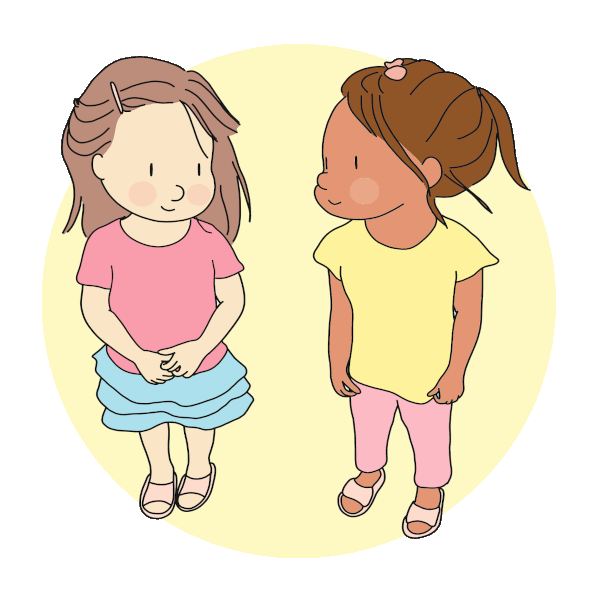
When a child is more comfortable playing with one or two others, it’s probably time to help them step out further. Here are a few ways a parent can encourage social development.
It’s wise to begin with simplistic games which use repetitive elements and have a structured beginning and end; they’re great for teaching kids with ASD how to take turns and use patience, and they’re designed to prevent frustration while also assisting with skill-building.
The next step in social skills is to learn to take turns. They will need to develop patience and control feelings of frustration. These are crucial steps for the child’s social future.
An important step to social play success is observing your child’s social behavior. Be mindful of how your child interacts with others. If they often cause disruptions and are unable to relate well to others, seek the help of his treatment team for advice.
Chapter 5:
Tips for Unlocking Your Child's Play Potential
With a little help from parents and teachers, children with ASD can reap great rewards from the benefits of play.
Here are some ways you can help your child get the most out of their time spent playing.
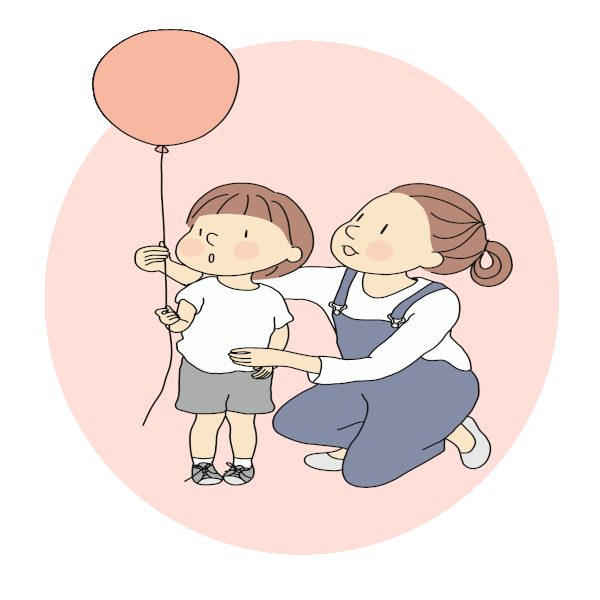
The social skills a child develops during play directly benefits many aspects of their lives, both now and in the future.
Here are some guidelines to help those benefits go further.
- Help boost their vocabulary by discussing the objects that are being used, naming actions being taken, and prompting your child to do the same.
- Praise your child’s progress in developing social skills. Look for opportunities for her to use these new skills in different settings. Playing dolls with a cousin at the cousin’s house might be a very large step for her.
- Role-playing is an important rehearsal of social skills for a person with ASD throughout their lives. By anticipating hiccups or challenges, decisions and reactions can be rehearsed. This gives them confidence and greater chances for success.
- Kids with ASD might use shorter words and sentences in speaking. Encourage them to expand their vocabulary. Using yourself as an example usually helps them understand what you mean.
- Essential life skills can also be learned and discussed during role-play sessions; practicing buttons and snaps can serve the dual purpose of helping them improve their ability to dress themselves while also improving small motor control.
- Ordinary daily activities are perfect for providing real-life examples of playing to learn. Taking a bath, making a bed, or helping cook are great skills and are built-in play models.
- A child with ASD may have a limited and exclusive view of play. They might only be interested in playing with green blocks to the exclusion of all toys but those. Don’t remove the favored object, but try to gently introduce others into the mix.
- Be receptive when your child shows interest in participating and playing, as this is when they’re most likely to really absorb the benefits of play; likewise, be receptive when they’re ready to stop playing, so that the correlation remains positive.
Finally, parents, don’t forget to have fun yourself. It can be easy to see everything as learning or therapy when you are supporting an autistic child – but, of course, play is about fun. Try to have some too.

